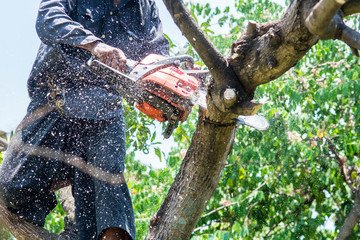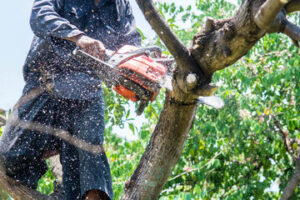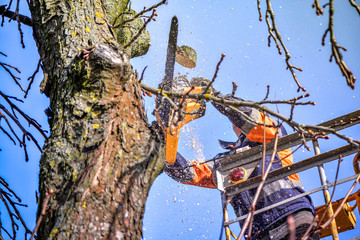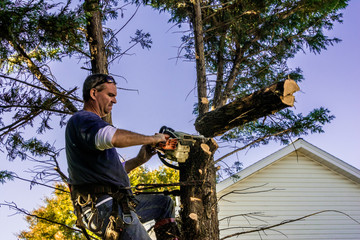
How to Prepare Your Site for Tree Cutting
Before you begin cutting a tree, prepare the site. You may ask neighbors and others to leave the area if you plan to cut down a large tree. Select two escape routes from the tree. One should be at least 20 feet from the base, and the other should be at a 90-degree angle to the trunk. Clear obstacles along the escape routes. Then, position your saw and other tools 20 feet away from the tree’s base.
 Usually, Tree Cutting is performed by cutting down the tree in one piece. The tree trunk is cut from the side facing where it will fall. When it falls, smaller pieces will be removed. In some cases, however, trees can’t be cut down in one piece because of power lines or buildings. When this happens, the tree branches can be cut separately and secured with ropes. Most often, tree cutting will be completed to a low enough stump to make firewood.
Usually, Tree Cutting is performed by cutting down the tree in one piece. The tree trunk is cut from the side facing where it will fall. When it falls, smaller pieces will be removed. In some cases, however, trees can’t be cut down in one piece because of power lines or buildings. When this happens, the tree branches can be cut separately and secured with ropes. Most often, tree cutting will be completed to a low enough stump to make firewood.
Before you begin cutting a tree, make sure that you have the proper safety gear. If possible, have a friend or family member assist you. Friends can assist you if you need to direct the tree as it falls. Make sure to assess the risk of a tree falling on a house or building. You may also need to notify nearby neighbors to let them know you’re cutting a tree. Make sure to check local regulations before attempting a tree removal on your property.
Proper cutting is essential for the health of the tree. Inexperienced tree cutters should avoid cutting decayed, leaning, or under tension trees. When cutting a tree, make sure you cut the branch collar and don’t leave a stub. This will minimize the risk of water damage and encourage callus formation. These are more likely to split when cut and could cause serious injury to the cutter or a bystander.
In addition to business insurance, you should have a website and purchase a domain name. You can design your website or hire a professional to create one for you. You can also join social media sites to post relevant content and interact with potential customers. Business cards and promotional fliers can help your customers find you, too. You can also participate in home improvement trade shows and small business events in your area to promote your services. Once you’ve decided to open a business, you’ll need to determine a strategy to promote it and ensure its success.
The chainsaw is the simplest tool available for cutting trees. A chainsaw can be used for pruning trees with dense branches. It cuts through the wood relatively easily, but users need to be cautious when operating it. A chainsaw may be a better option for a large tree. The advantage of using a chainsaw is that it requires less strength to operate. If the tree is too large for a chainsaw, use an ax.
The back cut is made on the tree’s opposite side, just above the hinge point of the undercut. This release of stress from the back of the tree makes the tree fall. The back cut should never be deeper than the undercut, because this reverses the roles of the undercut. Moreover, if you are not sure how to perform a back cut, consider hiring an arborist for the job. A professional arborist can also offer additional tips on how to cut a tree.
A tree-trimming safety booklet is an invaluable resource for safety-conscious professionals. It contains real accident reports of tree-trimming accidents and their prevention. Using the booklet in conjunction with safety training and equipment operator’s manuals is important. The booklet lists common tree trimming accidents and the warning signs and labels that should be used for safe operations. It also identifies hazards and how to assess them before performing a job. It may be useful to have a copy of a tree-trimming safety booklet on hand.
Leaning trees pose special problems. Conventional back cuts can result in the tree splitting or even falling prematurely. Consequently, it is important to consult an arborist before attempting to cut a leaning tree. If you fail to manage a leaning tree properly, you can endanger yourself and other people in the area. Always work with a trusted assistant who can watch your back and alert you if a branch or limb is about to fall.


